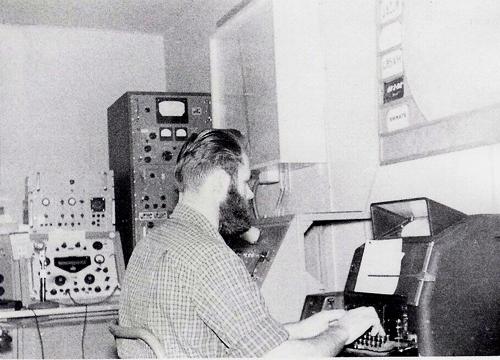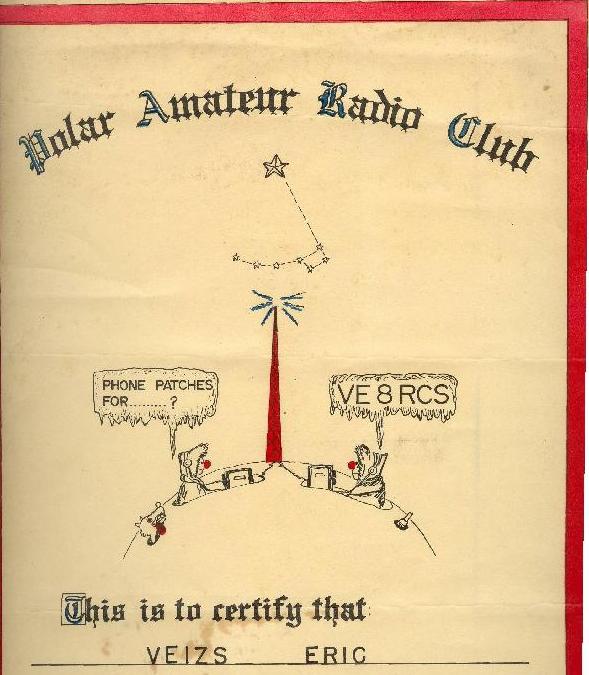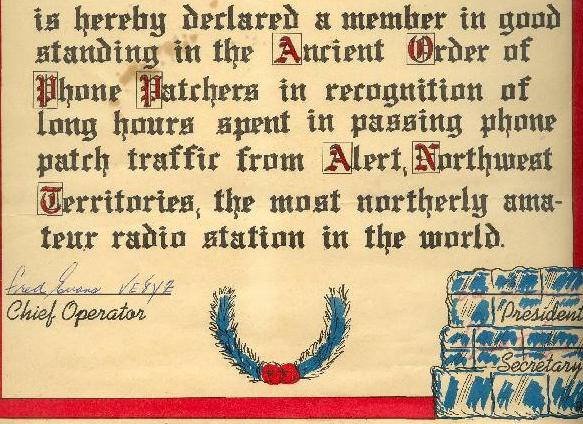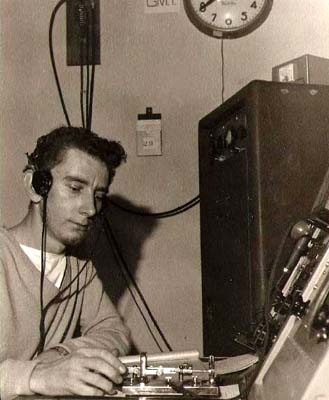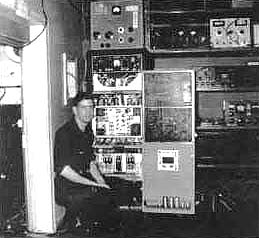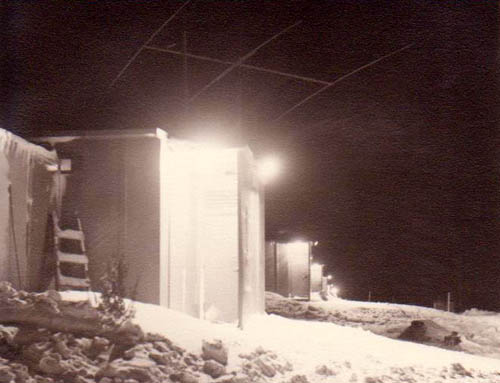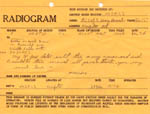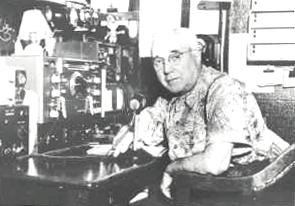One unique thing that I did back in 1994 was to bring most of my own
equipment up to Alert because I had heard that the ham shack had been stripped
down from its former complement. I didn't know what to expect.
As part of my gear, I also included a packet modem. VE8RCS had used
some digital modes on and off for a few years but I put the station on
an automatic bulletin board service (BBS) for nearly 6 months. People
from all over the world logged in and left me short e-mails. It was
pretty cool way to communicate back then".
A story about VE8RCS was published in the July 1981 issue of QST. Excerpts
from that article are posted here.
"When the weather turns hot, it becomes easy to think about
hamming in cooler places, such as Canada's most northerly outpost, Alert,
NWT. Alert now has most of the services of a modem community. Five diesel-powered
generators supply up to 1000 kWh of electricity. Each day, 10,000 gallons
of water is pumped from Dumbell Lake, 2 km away, and heated and reheated
before being stored for use in two 50,000 gallon reservoirs. Forty-eight
vehicles of all types provide transportation in and around the base.
Station personnel have living quarters that would be the envy of many
servicemen in the south. The three newest barracks have kitchenettes, lounges,
and automatic washers and dryers! Residents of Alert have plenty of free
time. For more active types, there's a weightlifting room, a gym, a curling
club and a bowling club. A closed-circuit television system carries taped
television programs eight hours a day. An FM radio station, manned by volunteers,
plays music around the clock. And to keep in touch with the folks back
home, there is weekly mail delivery by Hercules aircraft from CFS Trenton.
VE8RCS is located across from the barber shop, in the same building
that houses the Junior Ranks Mess and the CHANEX store. In many ways,
it's a typical ham station with dimensions of approximately 12 x
15 feet. The main station is a Yaesu 901DM and an Alpha 274 linear amplifier
feeding a 5-element Wilson monobander at 65 feet. This station is used
exclusively on 20 meters. A second station, with a Kenwood TS-820 feeding
a Hy-Gain Thunderbird TH6 beam antenna at 50 feet, is used on other
bands and for backup. A sign over the nearby backup station instructs operators
to make sure the beam is pointed south at the end of the day. This is done
as a precaution in case the rotor freezes up. South is the direction that
will procure aid for the station in case some seriously goes wrong.
What is different about VE8RCS is its purpose. A typical tour of duty
at CFS Alert is six months. The cold, the isolation and particularly the
separation from family and friends can become very depressing. Thus, the
many licenced amateurs among CFS Alert personnel devote hundreds of hours
each month to phone-patch traffic, keeping the 200 residents of Alert in
touch with those in the outside world. You can imagine it's a service well
appreciated".

